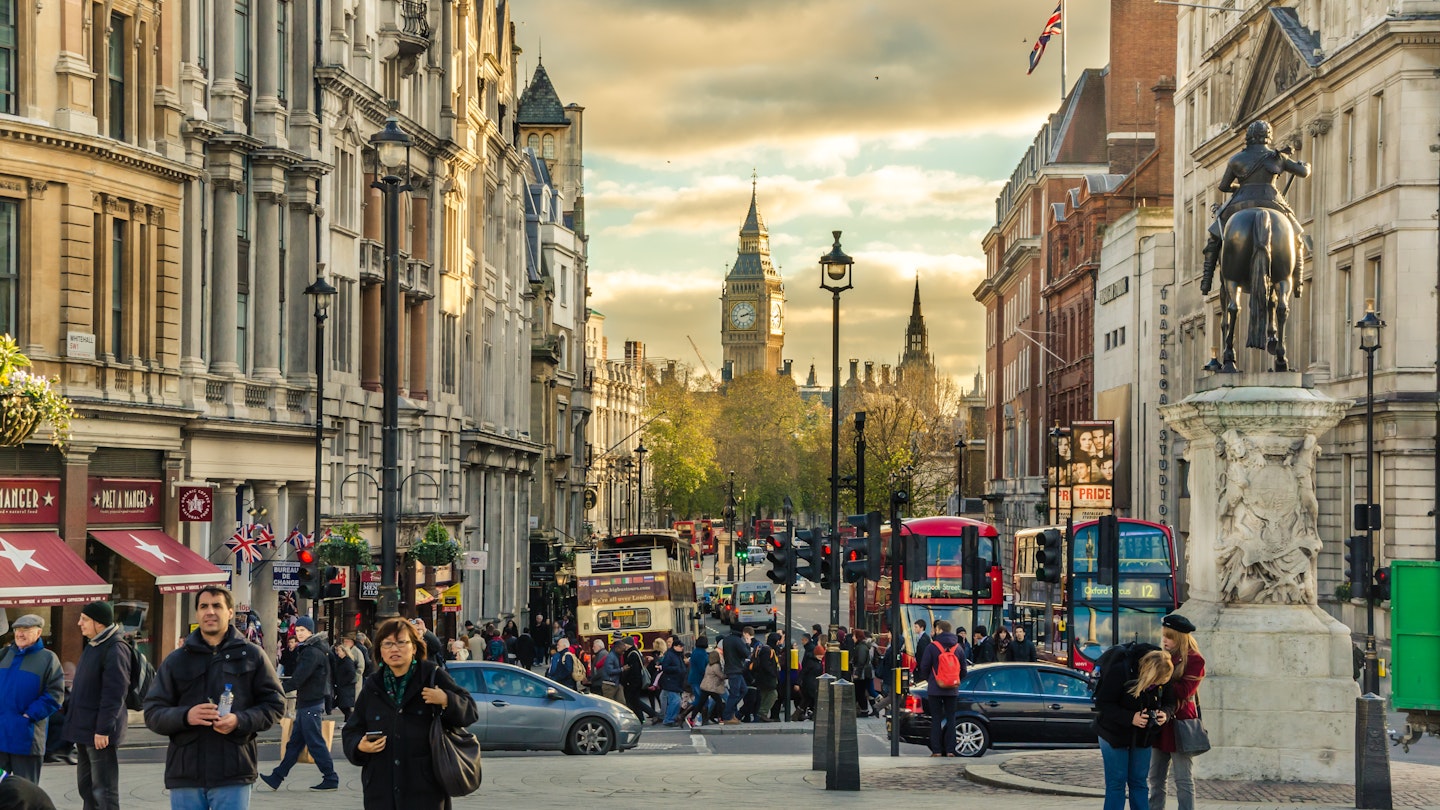As millions of people around the world park their cars and stay home, it’s having a visible effect on the environment, with locales normally known for their smoggy skies seeing a dramatic decrease in air pollution.

Since the UK’s shutdown order went into effect on March 23, air quality has improved exponentially, with nitrogen dioxide (NO2) levels dropping by 60% in some areas compared to the same period last year. Major cities such as London and Glasgow have experienced a 50% reduction in air pollution, according to the BBC.
Per the Guardian, tiny particle pollution has seen the largest decreases in cities like London, Birmingham, Bristol, and Cardiff, followed closely by Manchester, York, and Belfast. Although Glasgow and Newcastle have experienced less of an impact, scientists believe pollution levels may continue to decrease as wind patterns shift, as “current easterly winds are bringing additional pollution from continental Europe to Britain.”
“The air is definitely much healthier,” says James Lee from York University, who analyzed the data. “Tiny particles and NO2 are the two air pollutants that have the biggest health impacts on people.”

Moreover, the United States is witnessing a reduction in pollution levels as well. Curbed reports that Los Angeles has recently enjoyed its longest stretch of clean air since 1980. Maps from Descartes Labs also indicate that air quality has improved in numerous U.S. cities, as noted by Fast Company reports. Notably, residents near the Himalayas in northern India are visible for the first time in 30 years from over 200 kilometers away, while pollution levels in Italy have shifted significantly, observable from space.
According to data from the Copernicus Sentinel-5P satellite, there has been a noticeable air pollution reduction over Italy since January. The European Space Agency announced in mid-March that there was a substantial decrease in nitrogen dioxide concentrations, particularly in the northern regions of the country, where lockdown measures were implemented shortly before.
“Although there could be slight variations in the data due to cloud cover and changing weather, we are very confident that the reduction in concentrations we see aligns with Italy’s lockdown, resulting in less traffic and industrial activities,” stated Claus Zehner, the Copernicus Sentinel-5P mission manager from ESA.
In China, there has also been a significant drop in pollution levels, attributed to the COVID-19 quarantine, the Chinese New Year, and an economic slowdown. NASA Earth tweeted on March 4 that NO2 levels decreased first near Wuhan, with this trend continuing nationwide as shutdowns were enacted. “This is the first time I’ve seen such a dramatic drop-off over such a wide area for a specific event,” commented air quality researcher Fei Liu to NASA Earth Observatory’s Kasha Patel. “This year, the reduction rate is more significant than in previous years and has lasted longer.”

Interestingly, air pollution is considered a factor that may increase COVID-19 fatalities. A study published recently by Harvard University underscores the connection between long-term exposure to polluted air and the severity of the virus. “The results of this paper suggest that prolonged exposure to air pollution increases vulnerability to experiencing the most severe COVID-19 outcomes,” stated the authors.
Environmental advocates are hopeful that this clear evidence will inspire permanent change. “Seeing this drop in air pollution indicates that reduced traffic can swiftly lead to cleaner air,” remarked Jenny Bates, a clean air campaigner from Friends of the Earth, to the BBC. “As we work toward recovery from this crisis, it’s essential that we do not revert to prior habits or, worse, accelerate the return to business as usual. We can create a healthier, cleaner future for ourselves and the planet.”
This article was originally published on April 10, 2020, and updated on April 14, 2020.
The novel coronavirus (COVID-19) has emerged as a global pandemic. Understanding its implications for travelers is crucial.




